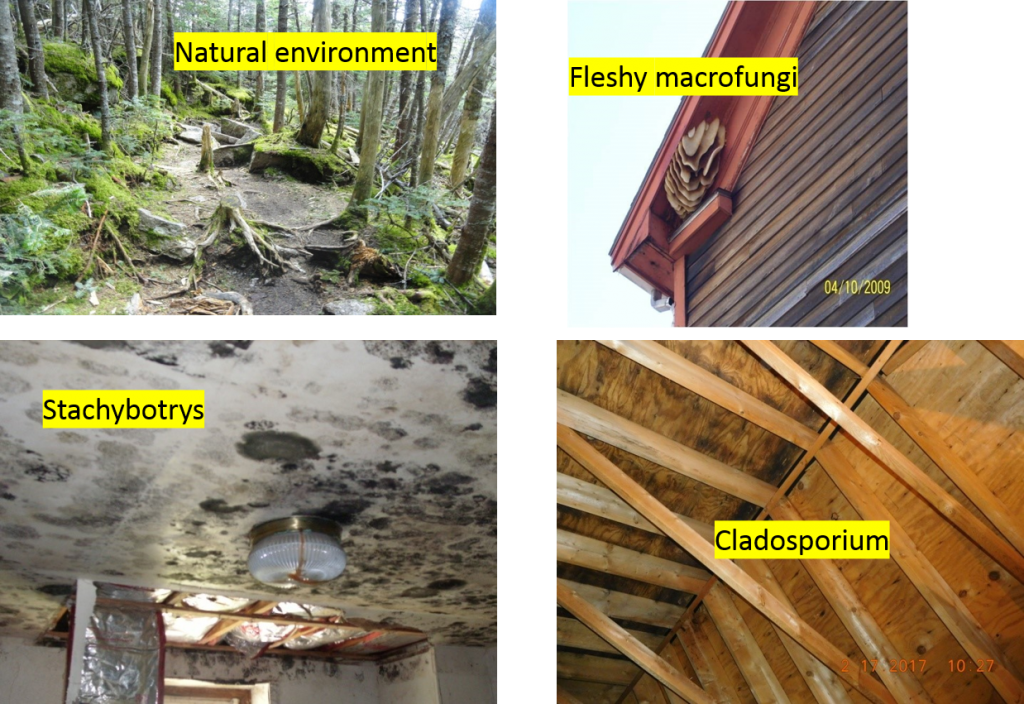Molds are part of the fungal kingdom, which also includes mushrooms, wood rots, and yeasts. There are two categories of fungi:
Fleshy macrofungi: This type of mold grows fruiting bodies which we call mushrooms or toadstools.
Powdery microfungi: This type of mold is normally referred to as mold or mildew which produces microscopic spores all along the surface of the fungal growth.
Mold spores are everywhere in the natural environment. They just lay there dormant waiting to be activated. They hide out in house dust. They get tracked in on shoes and get trapped in carpeting. They fly in on air currents. They are just searching for food. When they find food, which is anything biodegradable, they land on it and wait for a water source so they can start eating. If there is no water source forthcoming, they will go dormant or die of thirst. How do you activate the mold spores? Give them water. How do you deactivate them? Take the water away. It really is that simple, get rid of the water and you get rid of the mold.
Look outside your window. What do you see? You see mold growth everywhere on everything. Mold is in its natural environment. The main purpose of mold is to break down dead materials such as wood and fibers (substances used in building materials). It’s the BIO in biodegradable.
If mold is everywhere, then why isn’t it growing all over the inside of your house? It’s because your house is an artificial environment. You control the temperature and the humidity of your home. This is what I always tell my clients: “You don’t have a mold problem, you have a water problem.”
A common question about mold is, “Is it the black mold?” This is usually asked about attic mold. The mold in the attic may be black, but it rarely is the black mold. The mold that most people are concerned with is Stachybotrys. STACHYBOTRYS is typically associated with water damage. This is a slow growing, dark mold that grows well on cellulosic (paper-containing) building materials. It can produce a number of different macrocyclic trichothecenes which have been described as being toxic to humans and animals. Individuals with chronic exposure to the toxins produced by this mold report cold and flu-like symptoms, sore throats, headaches, fatigue, dermatitis, itching and burning sensations of the eyes and nose, and general malaise. This mold is rarely found in outdoor air samples, and it is usually not found in indoor air samples unless the colony is dry is then physically disturbed. This mold is common everywhere growing on soil and decaying plant material. Stachybotrys needs a high water content to grow.
So what type of mold is in your attic? If the mold growth is caused by water vapor as opposed to water leakage, the mold type is usually Cladosporium. Cladosporium is the most common spore type reported in the air worldwide. Outdoors it is found on dead and dying plant litter and soil. Indoors it is commonly found on wood and wallboard. It typically grows on window sills, textiles, and foods.

